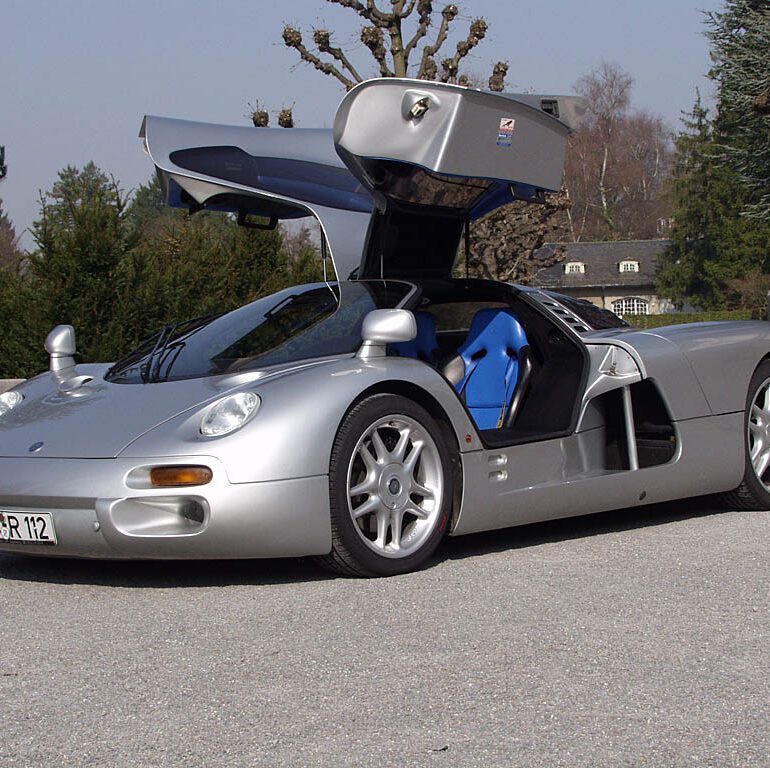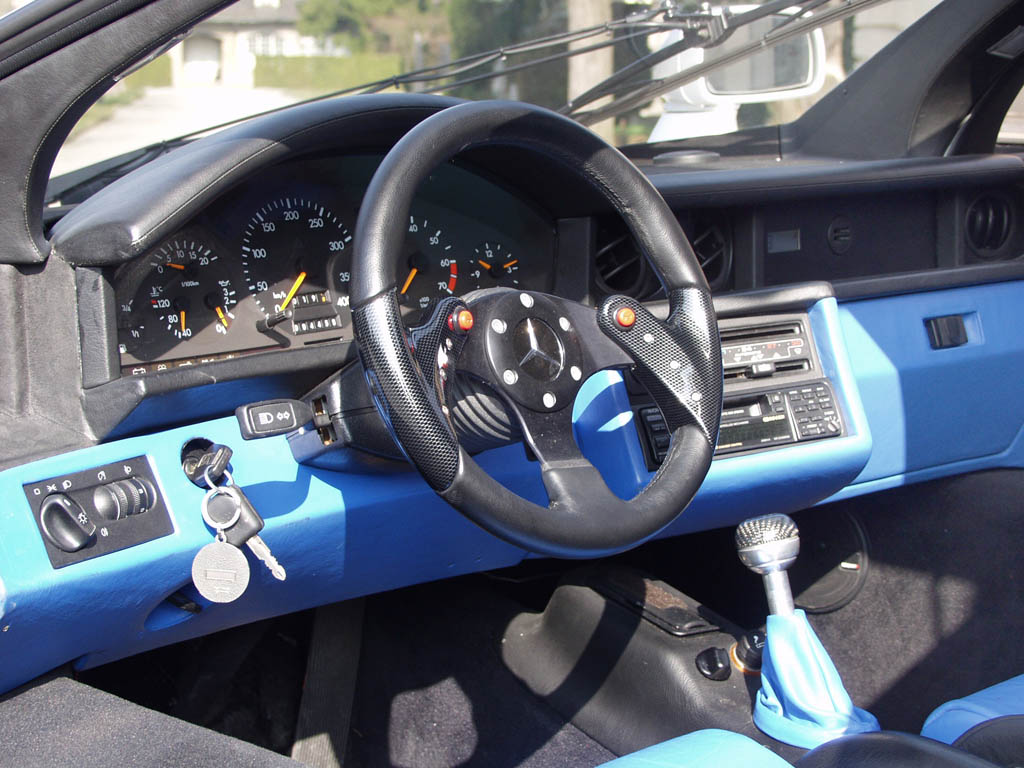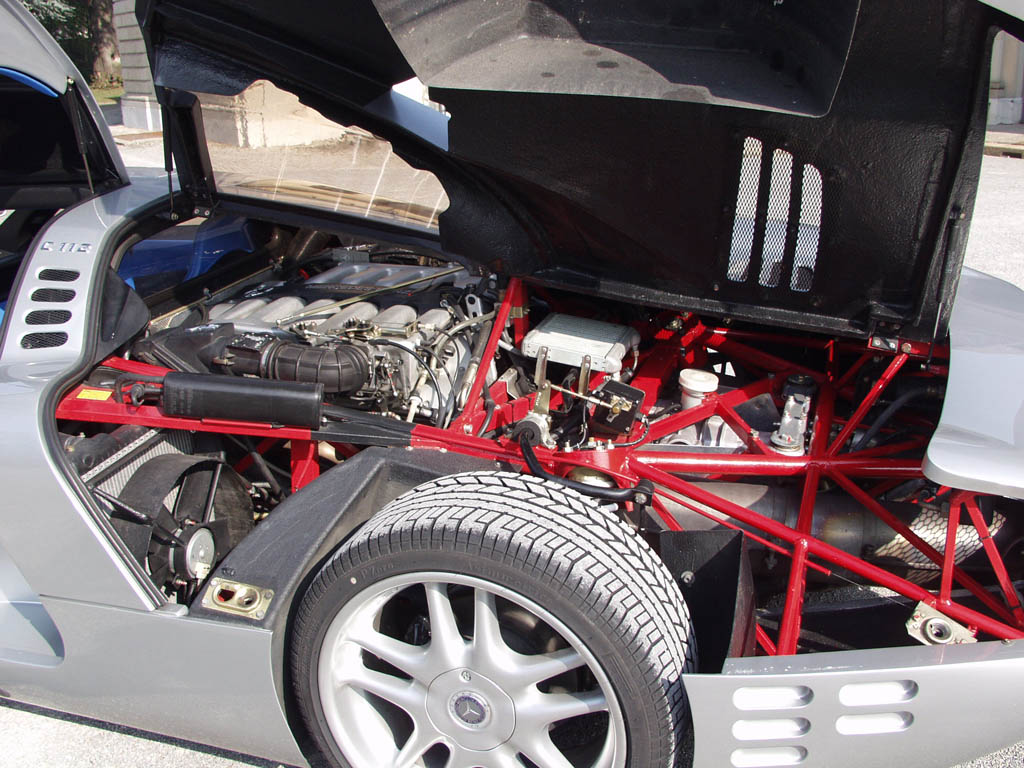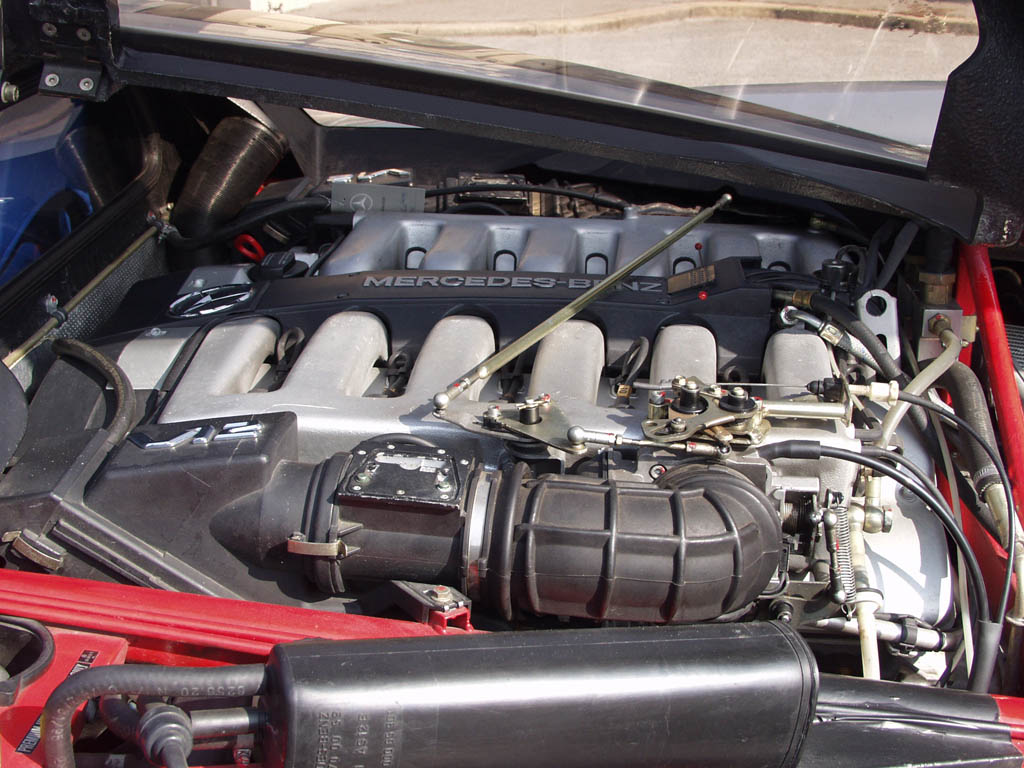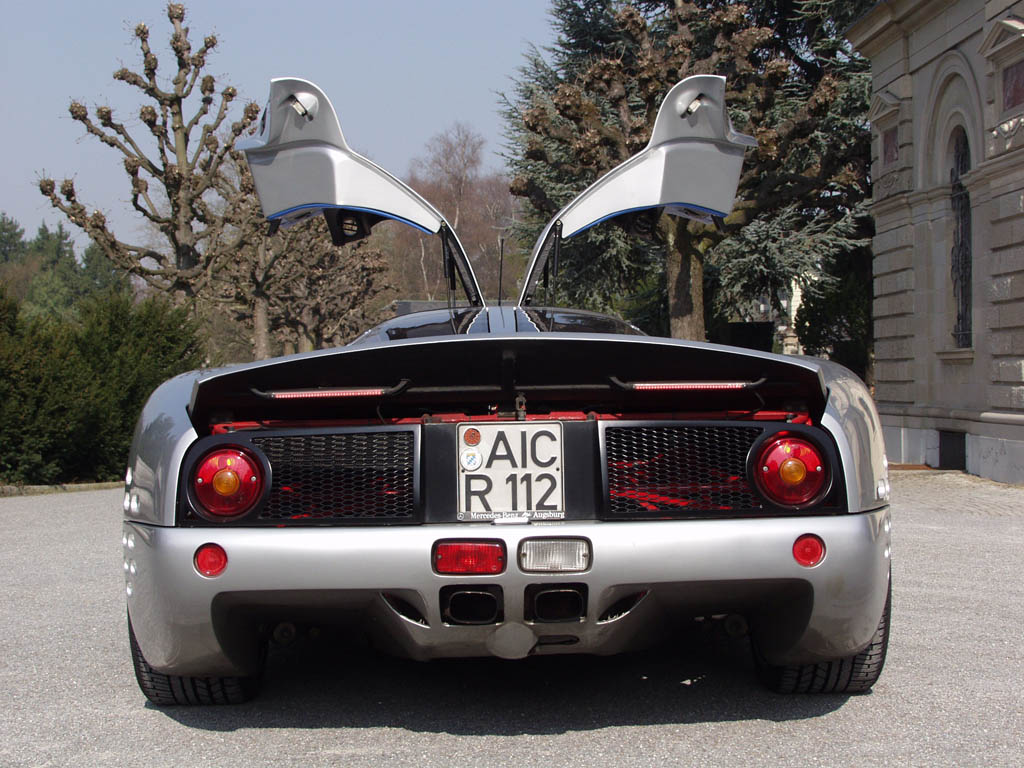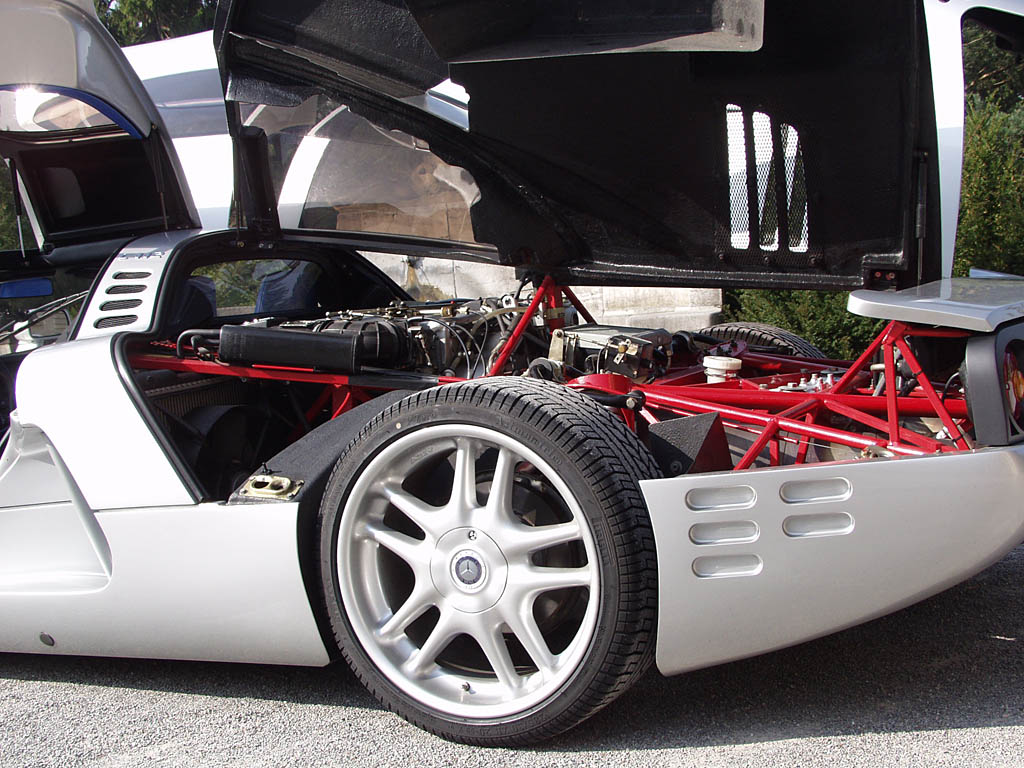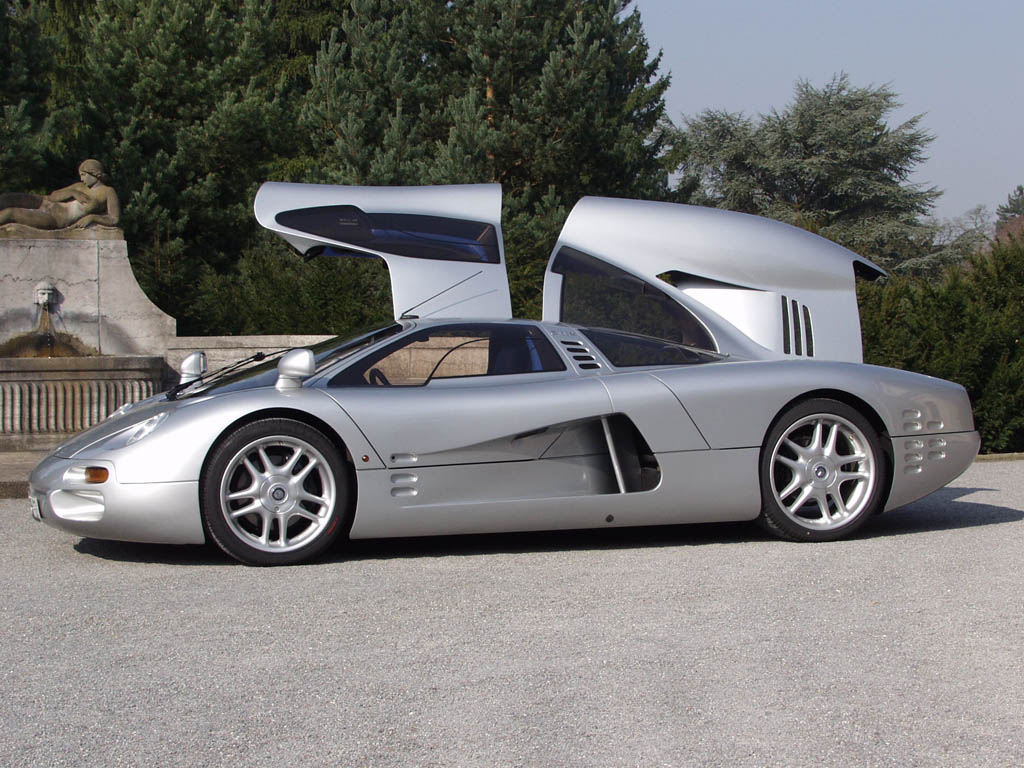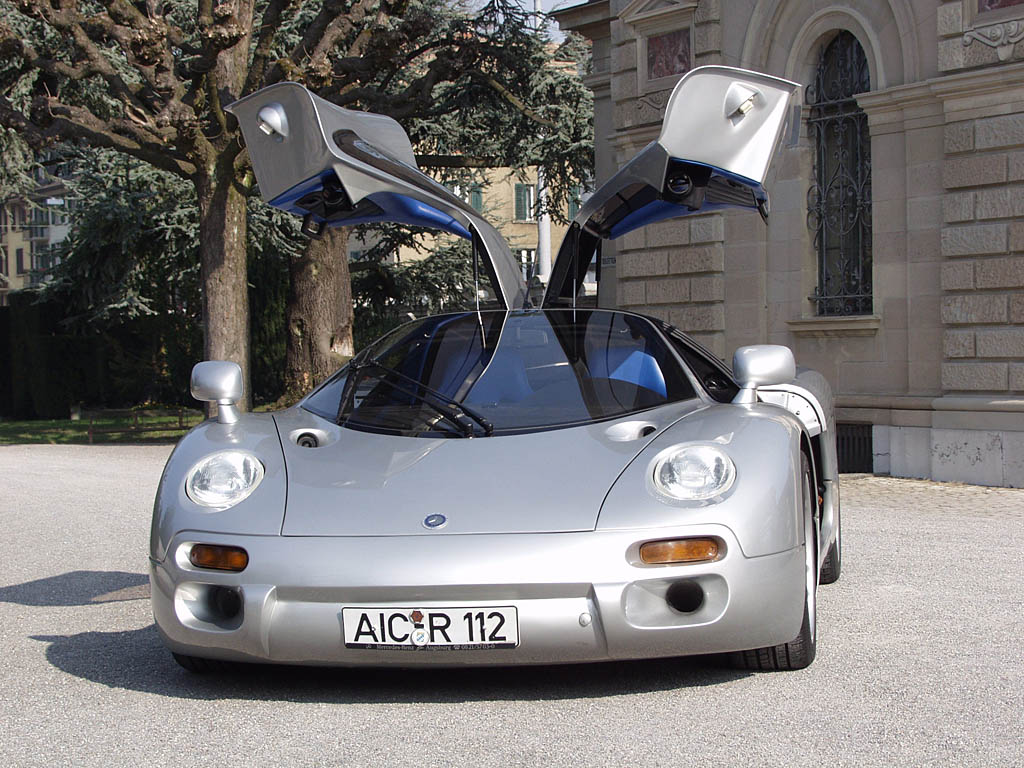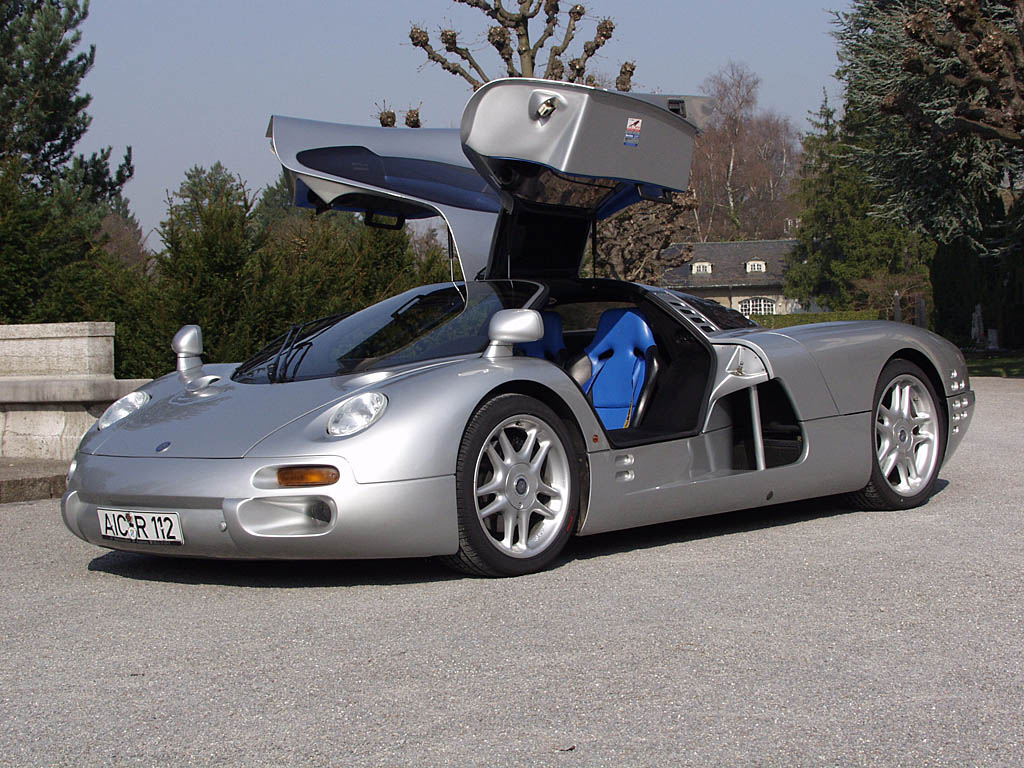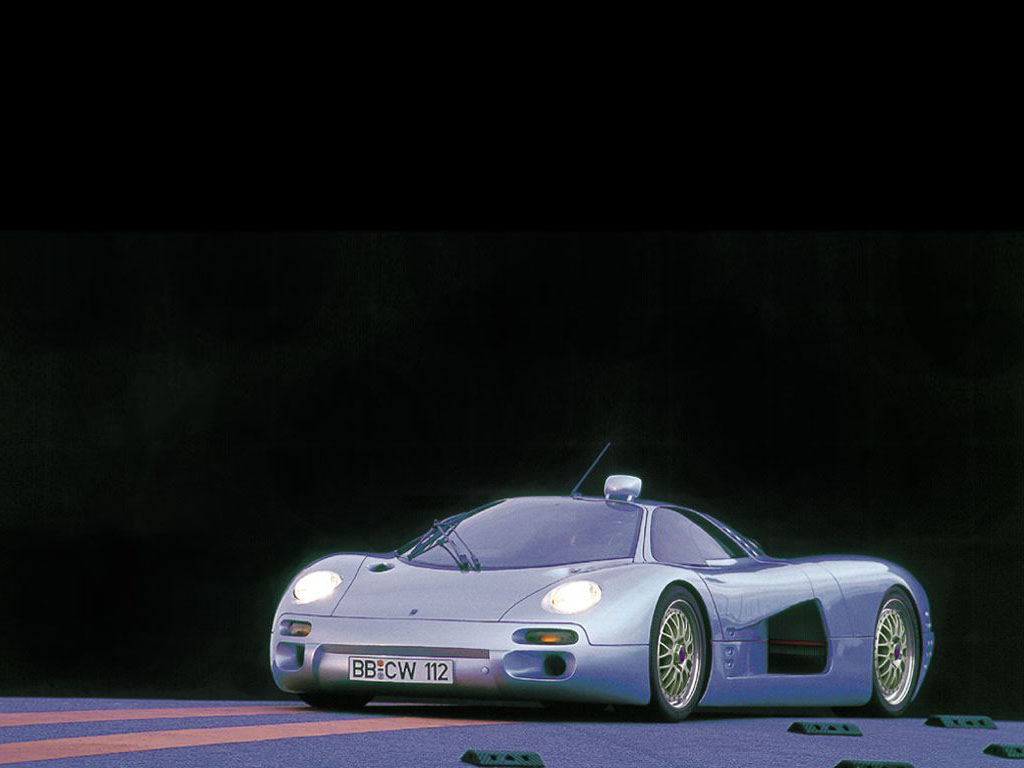1993 Isdera Commendatore 112i
One of the mysterious supercars of our time and a forgotten ’90s supercar is the Isdera Commendatore 112i. For those my age (early 40s), it was one of the supercars you could select in the 1997 racing game Need for Speed II which is why it may look familiar.
This one-of prototype is such a rare sight, that its photos, outside of the shots from the car’s release during the 1993 Frankfurt Auto Show, are hard to come by. Over the last decade, the situation has been particularly frustrating, but now, we finally have photos from one of the most striking and advanced supercars from the nineties.
The Commendatore story goes back to 1968, when German engineer Eberhard Schulz (born in 1940) built his first car in the laundry room of his parents’ home. In the late sixties, Eberhard Schulz was responsible for overseeing a spectacular series of Mercedes-Benz prototypes that started with the C111 Concept. These mid-engine projects were going to be a true successor to the 300SL and were similarly produced at great costs to introduce new technologies and styling. Unfortunately, after several different revisions of the C111 appeared, including some rotary engine versions, Mercedes-Benz decided to halt production. This cancellation prompted Schulz to start Isdera and, with cooperation from Mercedes, he continued the project to completion.
The Erator GT looked like a Ford GT4O but was designed and built from scratch by Schulz, who joined Porsche’s design and development department in 1971. He worked there until 1982, then founded his own automotive design and consultancy business, Isdera, in Leonberg, near Stuttgart. It built wind-tunnel models, concept cars, mock-ups and prototypes, and did aerodynamic research and design jobs for customers. Cars it created for other brands included the BMW E30-based Baur TC3 Coupe’ and the Irmscher GT.
In 1983 Schulz launched his first sports car under the Isdera label, the Spyder O33i/036i, a mid—engined roadster with a Mercedes engine of either four or srx’ cylinders. One year later, Isdera introduced the Imperator 1081′, a mid- engined supercar with gullwing doors and an AMG-tuned Mercedes V8. By 1984, Schulz was selling his roadworthy Imperator 108i of which 30 cars were made. The Imperator echoed the famous Mercedes C111 prototype, of which Schulz designed his own interpretation supposedly with the tacit blessing of Das Haus. Both Isdera models stayed in production for several years; the Imperator was facelifted in 1991 and had numerous engine updates, but no more than a few dozen of either were built.
In 1993, at the Frankfurt auto show, Isdera showed the Commendatore 1121′, a car originally intended for the Le Mans 24 Hours. The Commendatore was the work of Schulz and his two sons. It was completed as a pre-production prototype which was to be followed by a limited series with a unit cost of $450 000 USD. Unfortunately, before any production Commendatores were made, Isdera went bankrupt and the remainder of the company was sold to Swiss interests. This left the sole prototype for the world and, since Schulz was particularly experienced at creating advanced prototypes, it was finished as a fully drivable and roadworthy machine.
Following the Imperator, Schulz decided to take his concept to the next level with the Commendatore. Like the Mercedes-Benz project cars, the Commendatore was packed with new technology hardly anyone else was willing to commit to. Thus, to develop this car, Schulz had to spend close to four million euros.
Most of the money went into advanced systems such an active rear airbrake designed to deploy under braking and an automatically adjustable ride height. Furthermore, the car was based around the largest Mercedes V12 available at the time and it was supported by a complex tubular space frame. The 6.0-litre V12 was from the W140 Mercedes 600 SEL. Reinforced glassfibre and carbonfibre bodywork clad a lightweight tubular chassis. The V12 was mounted longitudinally just in front of the rear axle, the six-speed Getrag gearbox behind it.
Despite being driven by Mercedes-Benz mechanics, the Commendatore lends many styling traits from Porsches of the past. Its long rear overhang is reminiscent of the long tail Porsche 917 and front lights are straight from the Porsche 968.
Intended as a ‘practical supercar,’ more GT than street-legal Le Mans prototype, the Commendatore 112i’ had a large 120-litre fuel tank, a 200-litre luggage compartment at the front, and a cramped but comfortable cabin with leather racing seats, air-conditioning and a high-end audio system. It featured ABS, ASR and a system that automatically adjusted the ride height, lowering the body by up to 3 mm at autobahn speeds. Pieces de resistance were the automatic airbrake on the tail (the Commendatore was the first car to have this feature) and Schulz’s trademark roof mirror.
Its top speed was quoted at 340km/ h (211 mph), helped by a very low drag coefficient of 0.306 and that 414bhp V12. But the 1575 kg Commendatore 112i never made it to Le Mans,
lts top speed was quoted at 340km/ h (21 lmph) , helped by a very low drag coefficient of 0.306 and that 414bhp V12. But the 1575kg Commendatore 112i never made it to Le Mans, or into production for that matter. lsdera had secured financial backing from a Japanese investor but funding dried up when Japan’s economy went into crisis in the early 1990s. Isdera had to cancel not only the Commendatore project but all its car development programmes. Eberhard Schulz, always a man to shun the limelight, returned to his core business in relative anonymity.
While the Commendatore never reached production, we are lucky that the sole prototype has survived and has been driven 3000 miles since then. As an entertaining thought, the Isdera leaves us wondering what situation Mercedes-Benz might be in had they persisted with Schulz, and changed to a mid-engine layout so early on. This car is currently owned by a rather secretive Swiss businessman.
Image Gallery & Pictures
Specs & Performance
| price $ | $485 000 usd |
| engine | Mercedes V12 |
| valvetrain | 4 Valves / Cyl |
| displacement | 5987 cc / 365.3 in³ |
| bore | 89.0 mm / 3.5 in |
| stroke | 80.2 mm / 3.16 in |
| power | 304.3 kw / 408.1 bhp @ 5200 rpm |
| specific output | 68.16 bhp per litre |
| bhp/weight | bhp per tonne |
| torque | 580.0 nm / 427.8 ft lbs @ 3600 rpm |
| redline | 6200 rpm |
| driven wheels | Mid Engine / RWD |
| front tires | F 225/35ZR-18 |
| rear tires | R 295/35ZR-19 |
| front brakes | Vented Discs |
| f brake size | x 332 mm / x 13.1 in |
| rear brakes | Vented Discs |
| r brake size | x 310 mm / x 12.2 in |
| front wheels | F 45.7 x 21.6 cm / 18 x 8.5 in |
| rear wheels | R 48.3 x 25.4 cm / 19 x 10 in |
| curb weight | 1480 kg / 3263 lbs |
| wheelbase | 2600 mm / 102.4 in |
| front track | 1550 mm / 61.0 in |
| rear track | 1550 mm / 61.0 in |
| length | 4665 mm / 183.7 in |
| width | 1885 mm / 74.2 in |
| height | 1040 mm / 40.9 in |
| transmission | 6-Speed Manual |
| gear ratios | :1 |
| top speed | ~330 kph / 205.1 mph |
| 0 – 60 mph | ~4.7 seconds |


